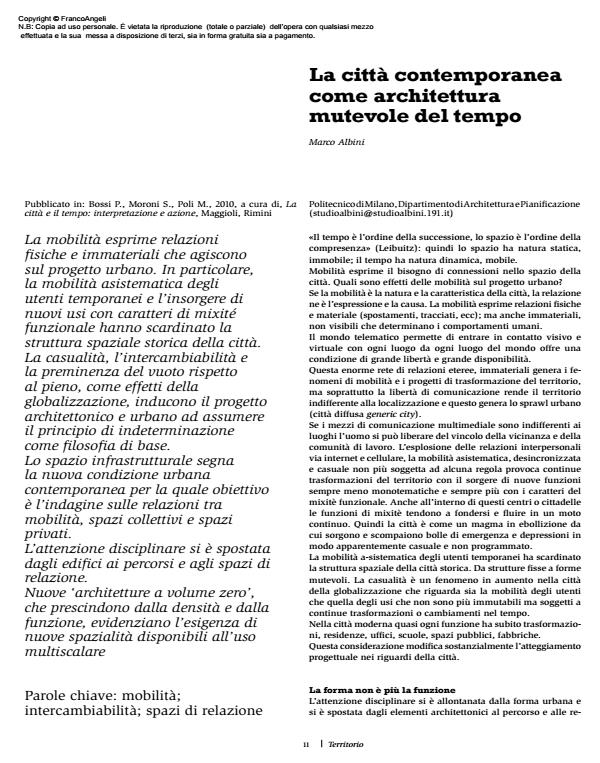La città contemporanea come architettura mutevole del tempo
Titolo Rivista TERRITORIO
Autori/Curatori Marco Albini
Anno di pubblicazione 2011 Fascicolo 2010/55
Lingua Italiano Numero pagine 4 P. 11-14 Dimensione file 506 KB
DOI 10.3280/TR2010-055002
Il DOI è il codice a barre della proprietà intellettuale: per saperne di più
clicca qui
Qui sotto puoi vedere in anteprima la prima pagina di questo articolo.
Se questo articolo ti interessa, lo puoi acquistare (e scaricare in formato pdf) seguendo le facili indicazioni per acquistare il download credit. Acquista Download Credits per scaricare questo Articolo in formato PDF

FrancoAngeli è membro della Publishers International Linking Association, Inc (PILA)associazione indipendente e non profit per facilitare (attraverso i servizi tecnologici implementati da CrossRef.org) l’accesso degli studiosi ai contenuti digitali nelle pubblicazioni professionali e scientifiche
Mobility expresses physical and immaterial relationships which act on urban design. The asystematic mobility of temporary city users and the appearance of new uses with traits of functional mixité have disrupted the historical spatial structure of cities. The randomness, the interchangeability and the predominance of empty compared to full spaces, as the effects of globalisation, are inducing architectural and urban design to adopt the principle of indetermination as a basic philosophy. Infrastructural space is an indicator of the new contemporary urban condition for which the objective is to investigate the relations between mobility, collective spaces and private spaces. The attention of the experts has shifted from buildings to routes and social spaces. New ‘zero volume architectures’ which, regardless of the density and the function, highlight the demand for a new sense of space available for multi-scalar use.
Parole chiave:Mobility; interchangeability; social spaces
Marco Albini, La città contemporanea come architettura mutevole del tempo in "TERRITORIO" 55/2010, pp 11-14, DOI: 10.3280/TR2010-055002